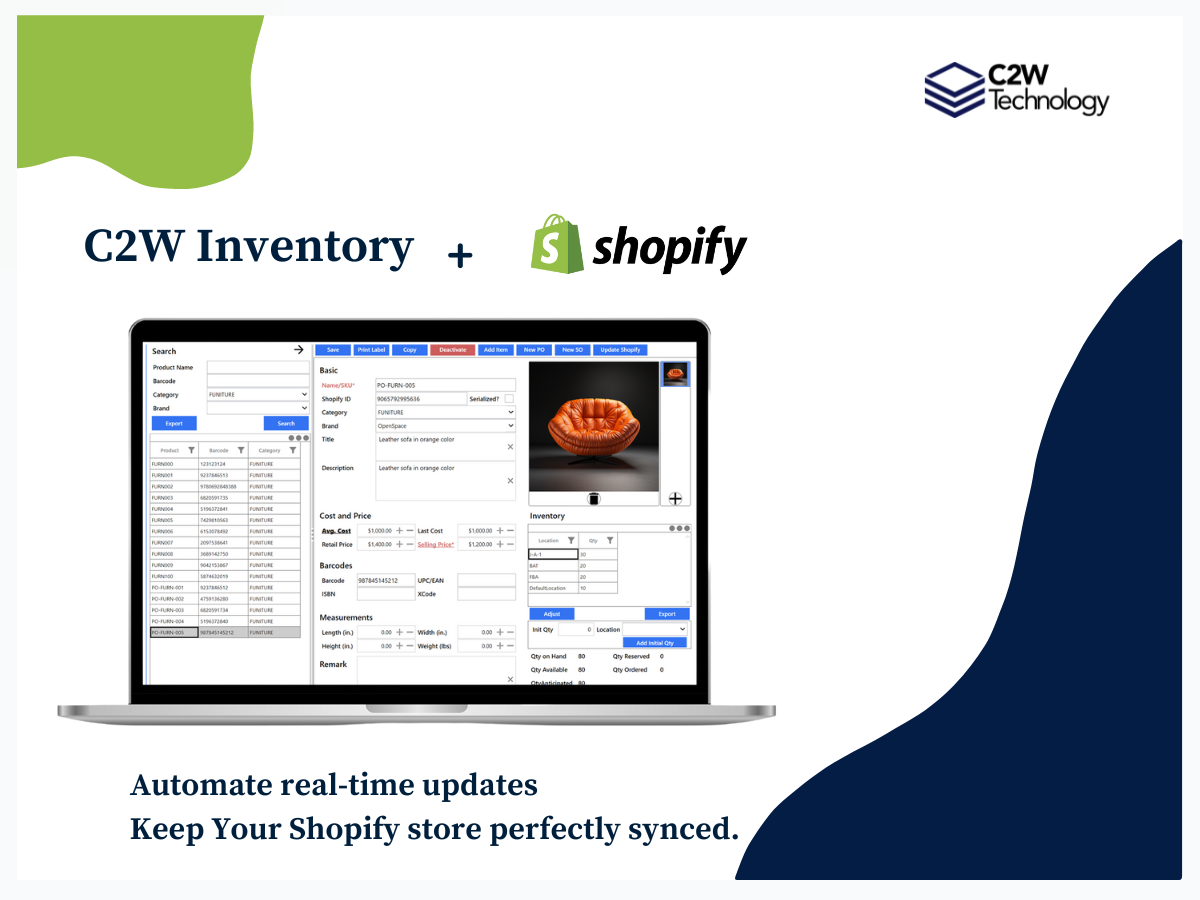Did you know that the world’s annual cost of inventory distortion, including stockouts, shrinkage, overstock, and similar distortions, is about $1.1 trillion? How to tackle that? Inventory management is the key.
Effective inventory management helps to reduce inventory distortion costs and run an electrifying Shopify store. According to experts, consistency and a standard pace of product supply and delivery are obligatory to run a profitable retail business. Therefore, it is important to master the art of inventory management in Shopify. That’s exactly what we will cover in this comprehensive guide.
Here, we will clarify your concepts about inventory management and its significance and present the best way to manage inventory in Shopify.
What is Inventory Management?
Inventory management is a process or system of efficiently ordering products from suppliers, storing them in warehouses, and ensuring seamless sales. It aims to balance the cost of holding inventory with the benefits of having products readily available for customer orders.
Inventory management involves different activities, including:
- Tracking and maintaining stock levels
- Optimizing stock levels
- Simplifying the shopping and receiving process
- Minimizing holding costs
- Preventing situations of overstocking and stockouts
- Managing warehouse spaces
When it comes to Shopify, excellent inventory management can lower costs, improve customer satisfaction, and ensure optimal inventory levels.
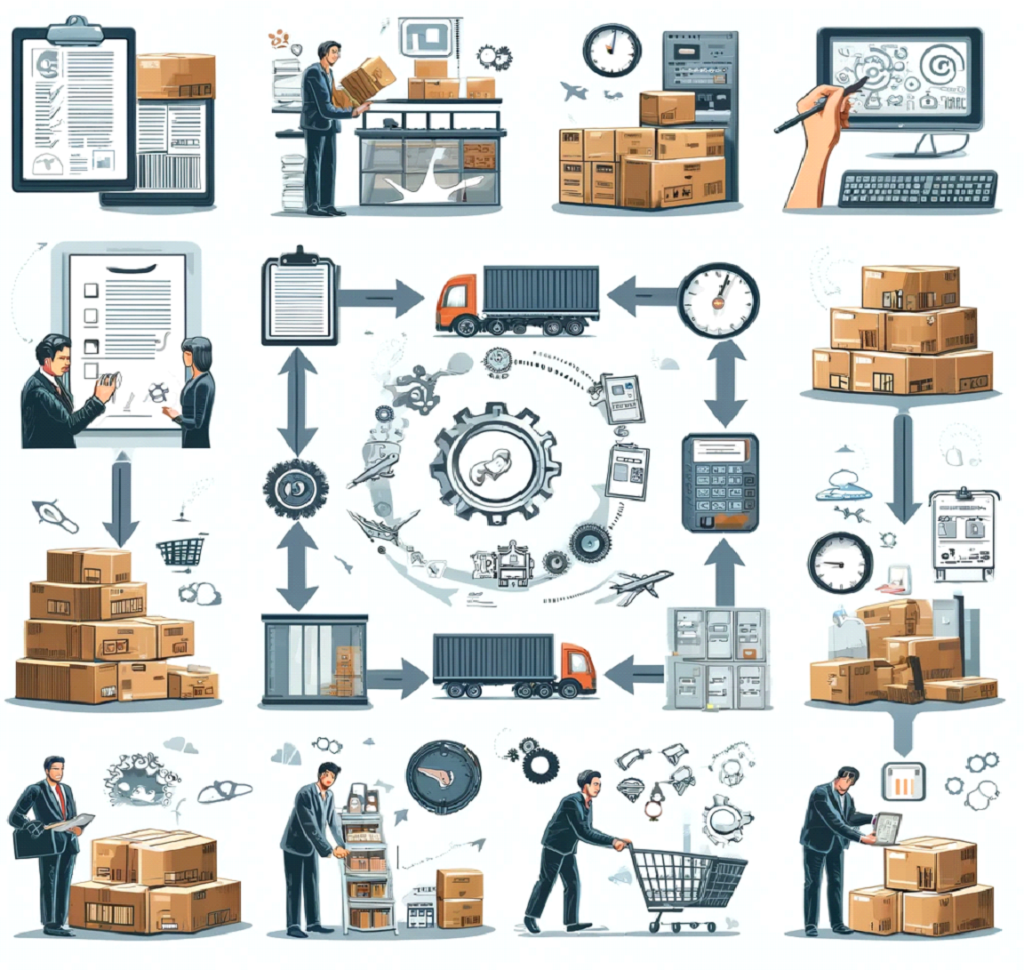
Why is Inventory Management Important?
For Shopify store owners, inventory management is not a choice but a necessary practice for success. It keeps the business profitable, avoids unnecessary costs, and satisfies customers. Below are some key points that highlight the importance of inventory management:
⦁ Timely Low Stock Alerts
One of the challenges with inventory is out-of-stock situations. It usually occurs when you don’t get low-stock alerts. That’s the story of many Shopify businesses, as the average inventory accuracy of retail stores is 65%. This is because retailers don’t usually have complete visibility of their supply chain.
Inventory management helps to centralize and organize inventory-related activities. It provides insight into real-time inventory levels, which lowers the chances of stockouts and missed opportunities.
⦁ Lower Dead or Spoilage Inventory
The product line is healthy when the inventory keeps moving. However, situations of overstocking increase waste and dead/spoiled inventory.
Inventory management provides a clear glimpse of the available inventory items. This helps to avoid inventory spoilage, especially if the items are perishable goods, like beverages and food. Similarly, it also helps prevent dead stock, i.e., items no longer in demand.
⦁ Reduce Warehouse Costs
Inventory management tells you what items sell fast compared to items that are stuck or low in sales. This helps to better manage warehouse space and cost, as you can only stock those products that sell.
⦁ Better Cash Flow
Inventory has a direct link to your business revenue. If you purchase the right quantity at the right time and avoid overstocking/stockouts, then you are making a serious profit. That’s what inventory management can facilitate.
Excellent inventory management ensures that your capital is not tied up in excess inventory. It helps you balance the amount you spend purchasing inventory and the amount you receive from sales. This better cash flow increases profitability and puts your business in a better position to grow.
What is an Inventory Management System?
Inventory management is possible if you use an inventory management system. An inventory management system is a software application that streamlines all inventory-related activities. It is designed to track, manage, and control inventory levels, deliveries, orders, and sales.
The key features of the inventory management system include the following:
⦁ Real-time inventory tracking
⦁ Barcode scanning
⦁ Low stock alerts
⦁ Inventory forecasting based on historical sales data
⦁ Order management
⦁ Warehouse management
⦁ Supplier management
⦁ Reports and analytics
In short, the inventory management system streamlines all processes from purchasing inventory to end sales and reporting.
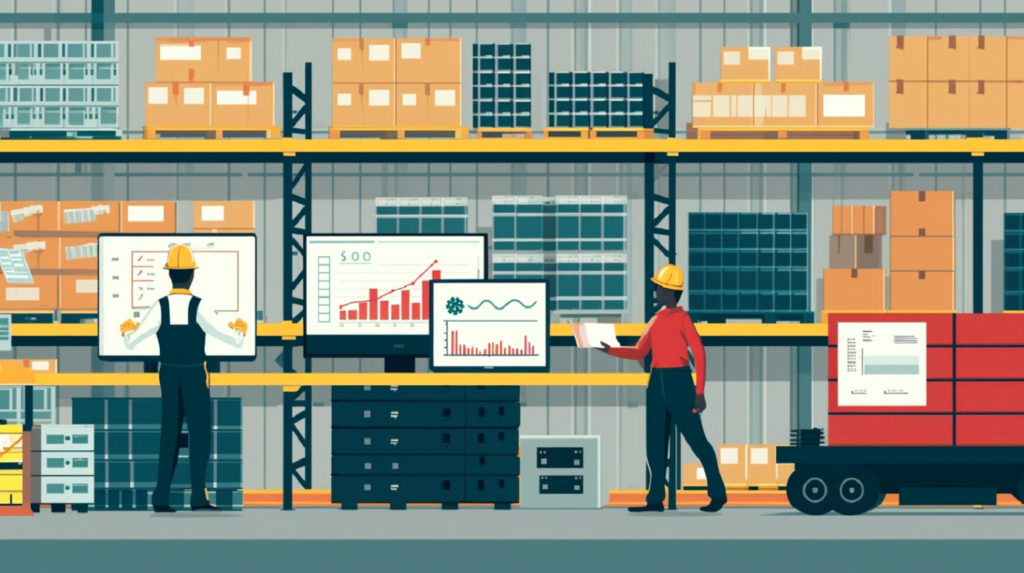
How Can Inventory Management System Simplify Your Shopify Store?
Today, 69% of businesses lack complete visibility over their supply chain. So, integrating an inventory management system in Shopify is the perfect way to source, track, store, and sell your inventory. It ensures that you have the right stock at the right place, at the right level, and at the right time.
The below points further highlight the role and significance of the inventory management system in Shopify:
⦁ Accurate Inventory Tracking
As a Shopify store owner, you are aware that customer satisfaction is crucial. Customers can easily switch to your competitors if they have to deal with out-of-stock situations. Therefore, an inventory management system is essential to avoid overstocking, overselling, or stockouts.
⦁ Better Inventory Accounting
You never want to have a stock that takes up significant space in your warehouse and sales slow. It’s like putting your capital on hold. The inventory management system helps keep an eye on inventory even if you have multiple warehouses. This way, you can smartly use your capital and minimize the amount spent on dead stock.
⦁ Better Demand Forecasting
For the right balance of stock, you need better demand forecasting based on market trends and seasonality. It is only possible if you have a clear view of your inventory and have access to valuable insights. That’s all achievable with an inventory management system. Furthermore, it can even analyze historical sales data, market trends, and seasonality and provide useful insights into future demand trends.
⦁ Streamline Multi-Channel Selling
If you sell across multiple channels, like Shopify, eBay, Amazon, and similar ones, you need to convey the right stock levels to customers across platforms. An inventory management system is the key to streamlining multi-channel selling.
⦁ Effective Supplier Management
If you are using multiple suppliers, you need to manage them effectively without getting overwhelmed. The inventory management system provides a centralized place for all supplier-related information. It can assist in automated reordering based on predefined thresholds. You can also track supplier performance. In short, the inventory management system streamlines supplier management to a great extent.
⦁ Operational Efficiency
Running a retail store can be overwhelming if things are not managed smartly. An inventory management system eradicates many business-related challenges. It automates many inventory-related tasks and reduces human error and manpower. This operational efficiency is then reflected in improved sales.

Challenges with Shopify's Built-in Inventory Management Software
Shopify offers built-in inventory management software to help store owners track inventory and manage sales. However, the tool cannot fulfill the needs of all types of retailers, especially those who use multiple channels to sell products.
Some of the common challenges with Shopify inventory management software are as follows:
⦁ Integrating Different Types of Products
Shopify has a long list of prohibited products. If you sell those products on other platforms, you will have to deal with multi-channel inventory management complications.
One solution is to have separate inventories for all platforms. However, this makes inventory tracking overly complex and leads to errors and unwanted financial losses.
⦁ Smart Inventory Replenishment
Once your business grows, your SKU library will also expand. This will make your inventory management process more complex and vulnerable to errors. To avoid this, you need a software solution that automatically replenishes depleted stock from suppliers.
The software should look into your sales volume on Shopify and other channels and then place orders intelligently. However, this type of support isn’t possible with the native Shopify inventory management software.
⦁ Inadequate Reporting and Analytics
Although the Shopify inventory management software provides basic-level inventory reports, the reports lack depth. Today, you need deeper analytical reports to make informed decisions based on sales trends, forecasting, etc.
⦁ Limited Supplier Management
The native Shopify inventory management software lacks advanced features for supplier management. You are not able to track lead times, analyze supplier information, manage purchase orders, etc. All these aspects are crucial to manage in today’s uncertain supply chain industry.
⦁ Support Multi-Channel Selling
Shopify inventory management software isn’t useful for multi-channel selling. The tool is not capable of estimating all the product variants in all your online stores.
Inventory Management System vs Inventory Management Strategies: What's the Difference
Inventory management systems and inventory management strategies are two different but interlinked elements of inventory management.
As mentioned above, an inventory management system is a tool that helps track, manage, and organize inventory. In contrast, inventory management strategies are methods used to handle inventory. Simply put, your inventory management system will be used according to the chosen strategy to optimize your processes.
Today, there are different inventory management strategies to handle inventory. So, the choice mainly depends on the retail location, business goals, market type, etc. Some of the common strategies include:
⦁ FIFO Strategy: The first-in, first-out (FIFO) strategy involves selling the old stock first. This is best suited for merchants selling perishable goods. In this strategy, the new products are placed at the back of the warehouse so that old products are sold first.
⦁ LIFO Strategy: The last-in, first-out (LIFO) strategy involves selling the new stock first. This is best suited for merchants who want to handle rising prices. It reduces taxable income but also lowers profit margins.
⦁ JIT Strategy: The just-in-time (JIT) strategy involves stocking and selling products with a minimal holding period. This strategy reduces the need for large warehouses and lowers the risk of overstocking.
⦁ ABC Analysis: ABC analysis is the way to categorize inventory into three classes, i.e.:
⦁ A Items: Low sales but high-value products.
⦁ B Items: Moderate sales and moderate-value products.
⦁ C Items: High sales but low-value products.
This approach helps to better handle the inventory based on the importance and demand of the items.
C2W Inventory – The Modernized Shopify Inventory Management Software
Now that we have cleared the crucial role of the inventory management system in running a Shopify store, the next important question is which inventory management software to use.
Ideally, the best inventory management software is the one that automates inventory tracking, manages multiple warehouses, provides stock alerts, streamlines order routing, and much more. All these features and even more you can get with C2W Inventory – an all-in-one inventory management software.
C2W Inventory is Shopify-integrated inventory management software that automates and streamlines almost all inventory-related activities. It simplifies stock management and sales in one place, eradicating stock shortages and overselling.
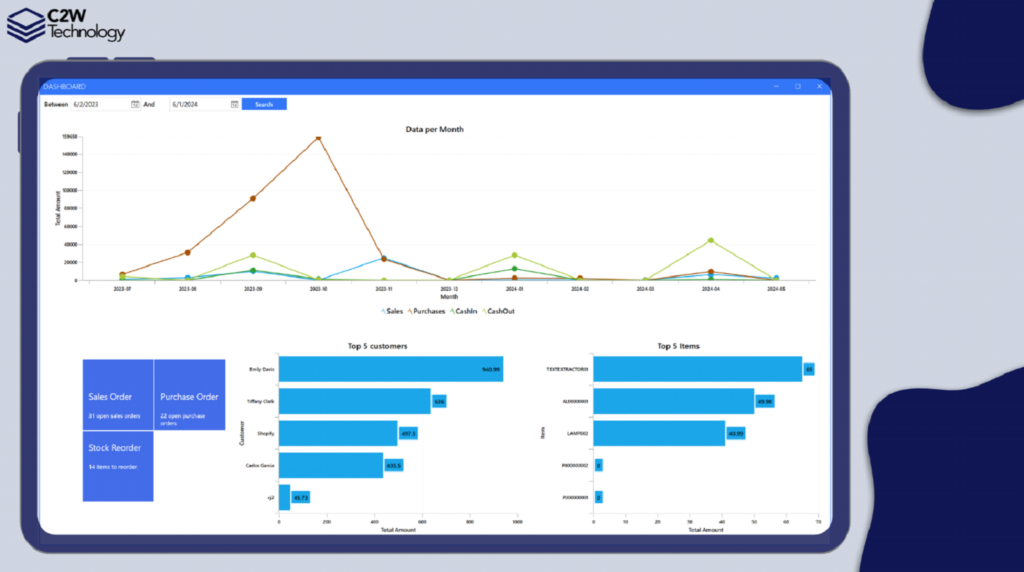
Here’s the list of top-notch features C2W Inventory brings to the table:
⦁ Track and Manage Inventory Across Multiple Locations
C2W Inventory syncs with your Shopify store and provides a centralized dashboard to track inventory across locations. You can keep track of all inventory items and every sales order, no matter your warehouse count. Besides that, you can specify reorder points and manage transfers.
⦁ Automated Inventory Updates
C2W Inventory offers an automated way of updating inventory levels or product details. It provides access to accurate inventory data and updates it in real-time.
When products are updated in C2W Inventory, the data—including category, title, description, selling price, retail price, barcode, images, and inventory level—syncs to your Shopify products based on the SKU.
⦁ Powerful Supplier Order Management
C2W Inventory provides all the basic to advanced features you need to manage suppliers. It lets you create and manage orders, keep a performance check on vendors, and much more.
⦁ Smart Mobile Barcode Scanner
C2W Inventory also offers a dedicated smartphone app that streamlines the process of picking, packing, and shipping orders. It empowers you to manage inventory from anywhere and get real-time stock updates.
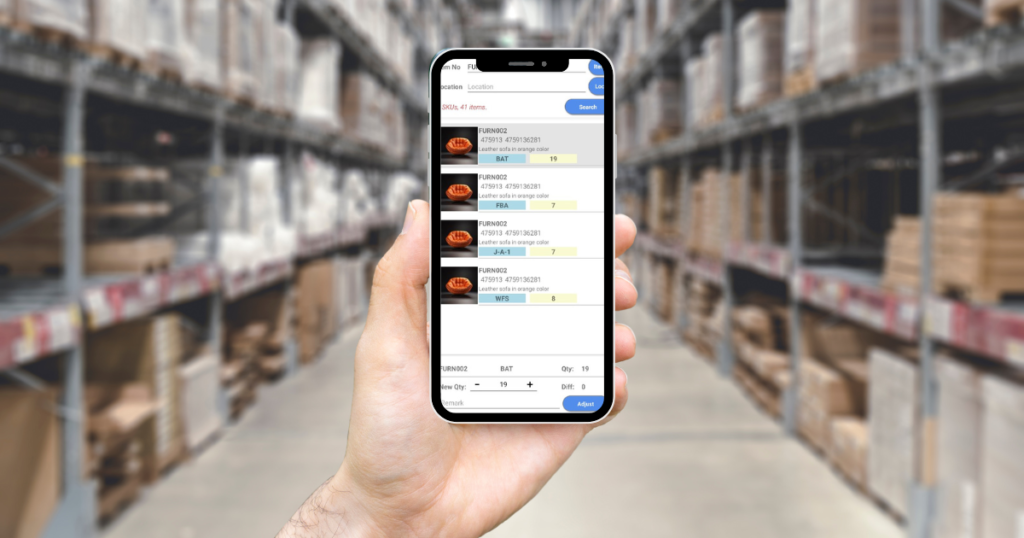
⦁ Optimized Order Fulfillment
For Shopify store owners, customer satisfaction and retention is crucial. That’s what CW2 Inventory ensures with its optimized order fulfillment system. From stock purchase and warehouse storage to sales and shipment, CW2 ensures optimized order fulfillment and tracking.
⦁ Automated Reorder Alerts
C2W Inventory offers automated reorder alerts based on your set threshold. As soon as inventory drops below the threshold, you receive a low-stock notification.
⦁ Create and Print Your Own Barcode Labels
C2W Inventory further enhances your inventory management by enabling direct printing of barcode labels. You can even perform batch print to print multiple labels simultaneously. This leads to automated label creation with improved accuracy and efficiency. Furthermore, barcode labels are easily scanned and integrated into sales, shipping, and tracking systems, leading to a unified inventory management system with better tracking.
⦁ Built-in Shipping Integration
C2W Inventory makes the shipping process a lot easier than ever. It lets you generate shipping labels with one click via Shippo and EasyPost integration. You even get access to real-time shipping rates. Moreover, the shipping information automatically syncs back to the Shopify store once the order is shipped.
Overall, C2W Inventory’s feature-rich software and its Shopify synchronization ensure your stock levels are always accurate and your shipping process is efficient. This then prevents the chance of selling items you don’t have or running out of stock.
Conclusion
Running a Shopify store is all about how you handle your inventory. When the right products are available at the right time and place, it means more sales and customer satisfaction. That’s why it is important to set up a full-fledged inventory management system.
C2W Inventory software fills that space with its modernized, feature-rich, and advanced features. Its automated inventory tracking, optimized order fulfillment, multi-location management, and other features are truly game-changing. Therefore, it’s time to take action. Try out C2W Inventory today and improve inventory management practices for your Shopify store.


